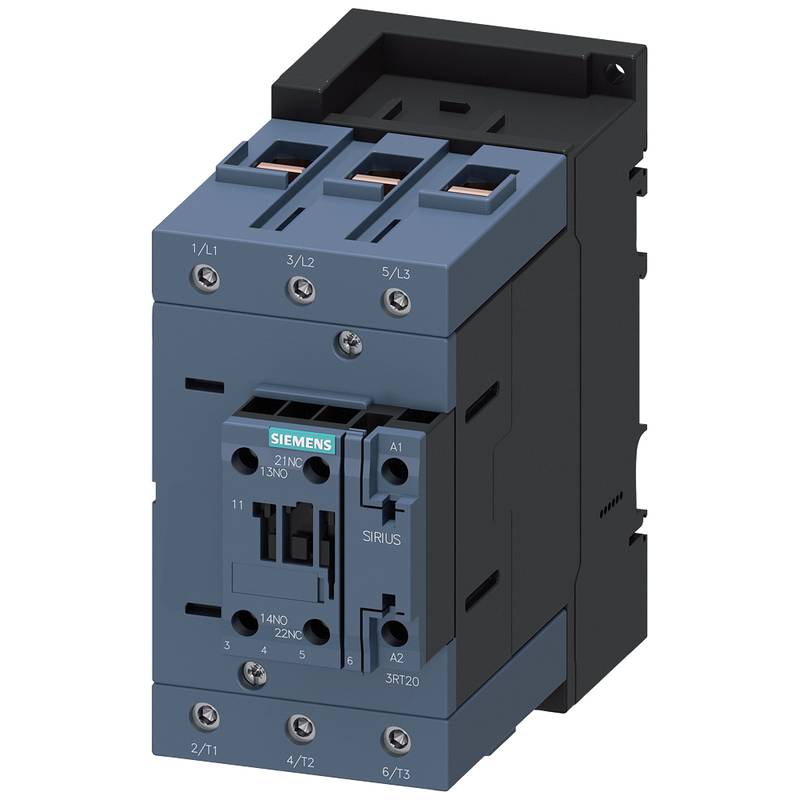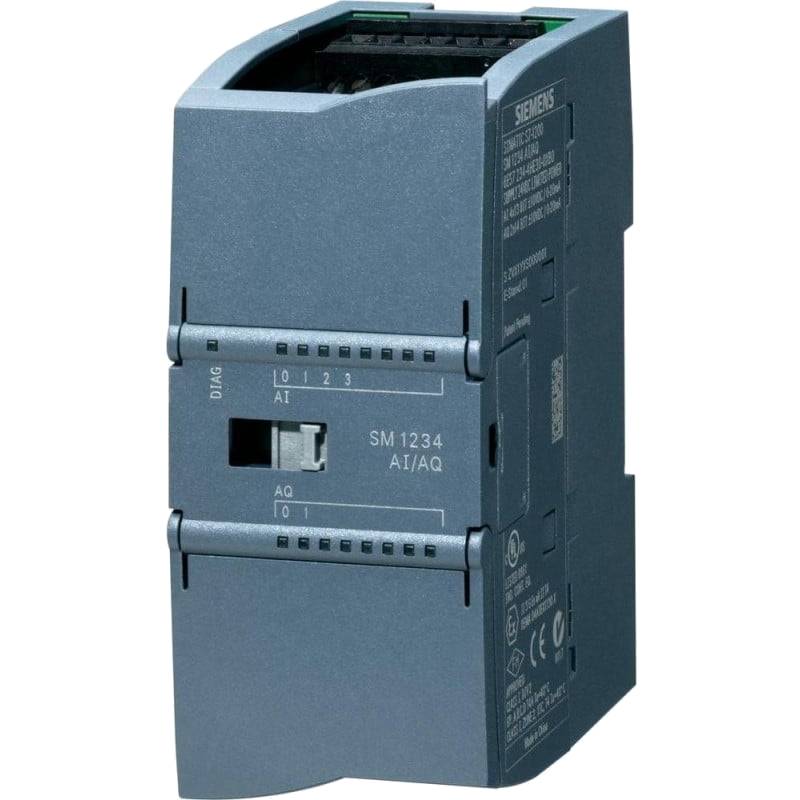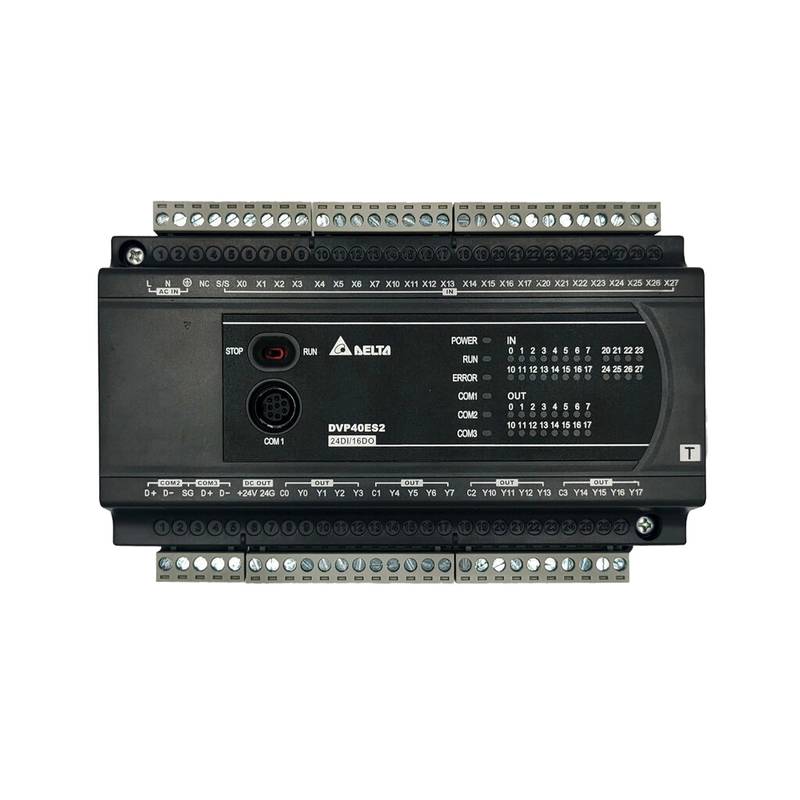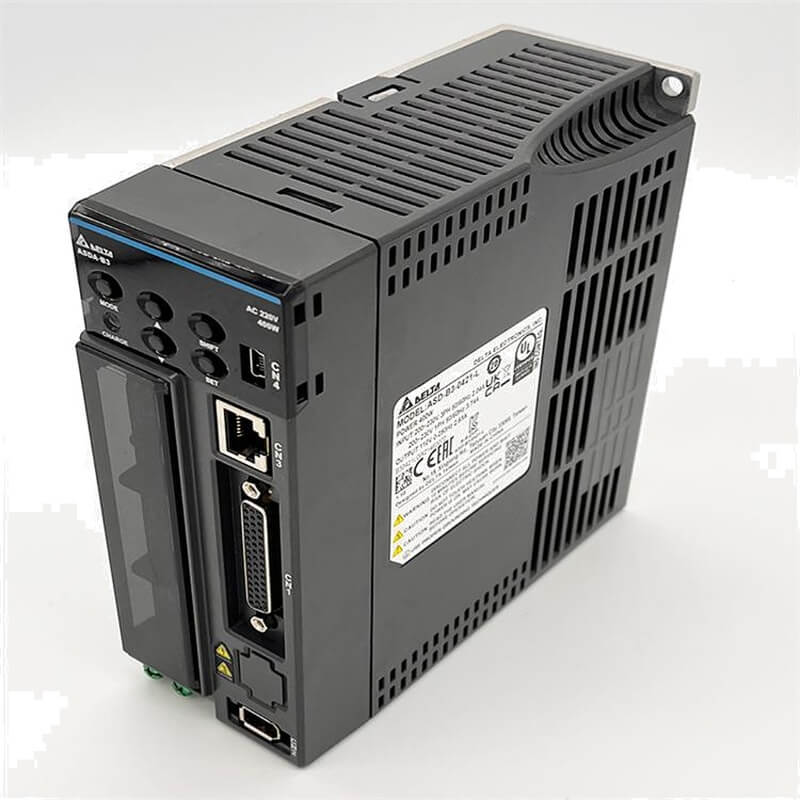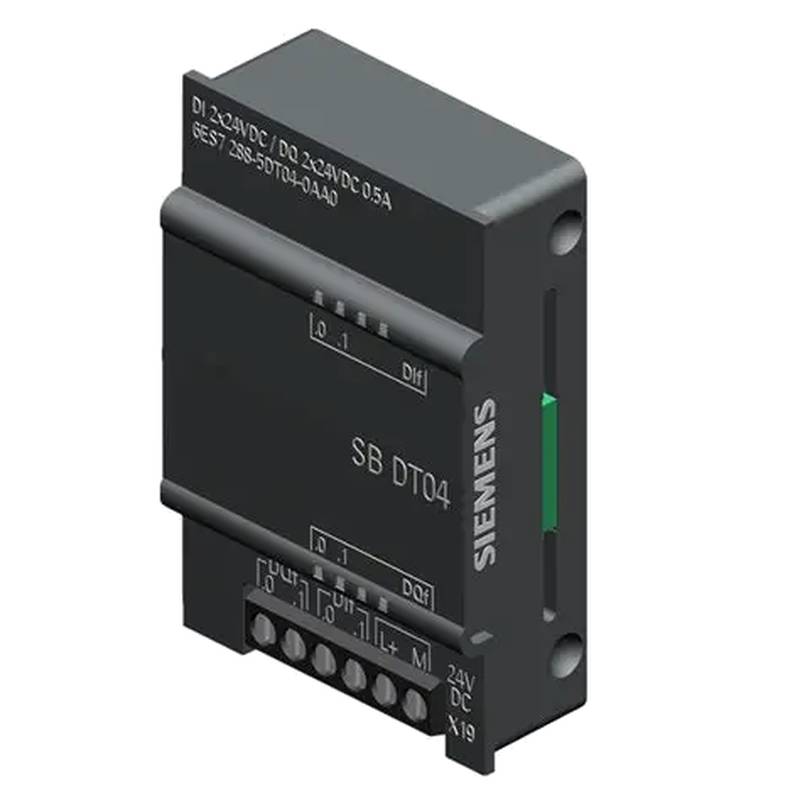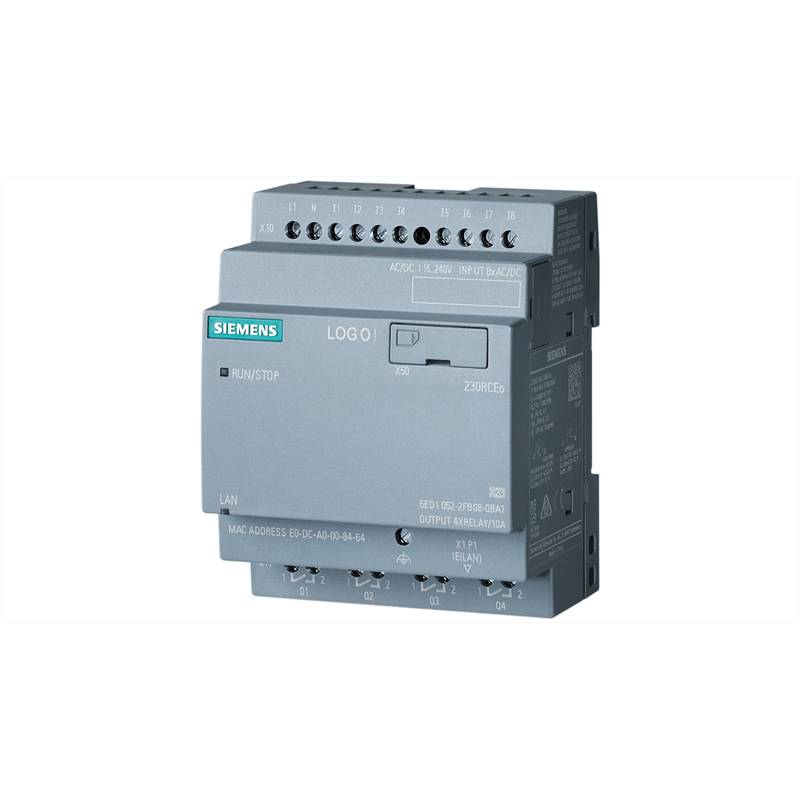
The Siemens 3RT2446-1NB30 is a robust motor reversing contactor engineered for demanding industrial applications, offering reliable control over motor direction. This device boasts a high continuous current rating of 140A and operates across a versatile 20-33VAC/DC control voltage range. Its primary advantage lies in its compact size and integrated design for forward and reverse switching, simplifying panel layouts and reducing installation time. The Siemens 3RT2446-1NB30 features three normally open (NO) auxiliary contacts, providing essential feedback for control systems. Its robust construction ensures longevity and consistent performance in harsh environments, positioning it as a premium solution for motor control in manufacturing, material handling, and process industries.
Product Specifications
| Feature | Specification |
| :--------------------- | :------------------------------------------ |
| Product Type | Motor Forward Reverse Reversing Contactor |
| Manufacturer | Siemens |
| Model Number | 3RT2446-1NB30 |
| Control Voltage | 20-33VAC/DC |
| Continuous Current | 140A |
| Auxiliary Contacts | 3 NO (Normally Open) |
| Mounting | Rail Mount |
| Protection Class | IP20 (Finger Safe) |
| Operating Temperature | -25°C to +60°C |
| Dimensions (H x W x D) | 145mm x 90mm x 160mm (approximate) |
Core Features & Market Positioning
The Siemens 3RT2446-1NB30 distinguishes itself through its integrated forward and reverse functionality, a significant advantage over systems requiring separate contactors for each direction. This integration streamlines wiring and reduces the overall footprint within electrical control panels, translating to cost savings in materials and labor. The device's high thermal current rating of 140A ensures reliable operation even under continuous heavy loads, a critical factor in many industrial settings. Siemens' established reputation for quality and durability further solidifies the 3RT2446-1NB30's market position as a dependable choice for critical motor control applications where downtime is not an option. Its compatibility with Siemens' broader SIRIUS 3RT2 range offers seamless integration with other control and protection devices.
Key Application Scenarios
This reversing contactor is ideally suited for applications demanding frequent or continuous motor direction changes. Common scenarios include hoist and crane operations, where precise control over lifting and lowering is paramount, and conveyor systems in manufacturing and logistics that require reversible material flow. It is also extensively used in pump systems requiring bidirectional operation, such as those in water treatment or HVAC applications, and in automated machinery where robotic arms or other components need to alternate their movement. The Siemens 3RT2446-1NB30's robust design ensures longevity and reliable performance in these dynamic operational environments.
Practical System Integration Guidance
Integrating the Siemens 3RT2446-1NB30 into existing control systems is typically straightforward due to its standardized DIN rail mounting and clear terminal designations. Proper wiring is crucial for safe and efficient operation. The control circuit for the 20-33VAC/DC supply should be connected to the appropriate terminals, ensuring correct polarity if DC is used. Power connections for the motor should be made to the main power terminals, with careful attention to phase sequence for correct motor rotation. Interlocking circuits, both mechanical and electrical, are essential to prevent simultaneous engagement of the forward and reverse coils, thereby avoiding short circuits and contactor damage. Users should consult the official Siemens documentation for detailed wiring diagrams and safety interlock recommendations tailored to their specific motor and control system configuration.
Operation and Risk Mitigation
Operating the Siemens 3RT2446-1NB30 involves controlling the energization of its coils to select forward or reverse motor operation. To mitigate risks, it's imperative to implement robust safety interlocks within the control system. Electrical interlocks, often achieved by using the normally closed (NC) auxiliary contacts of one contactor to break the control circuit of the other, are vital to prevent the simultaneous activation of both forward and reverse switching paths. Mechanical interlocks, physically preventing the contactors from engaging simultaneously, provide an additional layer of safety. Overload protection devices must be correctly sized and integrated into the circuit to prevent motor damage due to excessive current. Regular inspection of electrical connections for signs of wear or overheating is also recommended.
Scalability & Long-Term Value
The Siemens 3RT2446-1NB30 offers significant long-term value through its integration into the broader SIRIUS 3RT ecosystem. This compatibility allows for seamless expansion and upgrade paths, enabling users to incorporate advanced control, monitoring, and diagnostic features as needed. For industrial IoT (IIoT) integration, these contactors can be paired with intelligent communication modules and gateways, providing real-time operational data such as run time, switching cycles, and fault status to central control systems or cloud platforms. This capability facilitates predictive maintenance strategies, optimizes energy consumption, and enhances overall system efficiency, making the Siemens 3RT2446-1NB30 a future-proof component for evolving industrial automation landscapes.
Frequently Asked Questions (FAQs)
1. What is the primary function of the Siemens 3RT2446-1NB30?
This device acts as a motor reversing contactor. It controls the direction of a three-phase motor. It allows for forward and reverse rotation.
It achieves this by switching the power connections to the motor windings. The 3RT2446-1NB30 integrates both forward and reverse switching in one unit. This simplifies control panel design and wiring complexity.
Its main role is in applications requiring bi-directional motor operation. Examples include hoists, cranes, and reversible conveyor systems.
2. Can the Siemens 3RT2446-1NB30 be used with a 24VDC control supply?
Yes, the 3RT2446-1NB30 is designed for a versatile control voltage. It accepts inputs from 20-33VAC or 20-33VDC.
Therefore, it is compatible with standard 24VDC control power supplies. Ensure your DC supply falls within the specified 20-33VDC range for optimal performance.
Proper wiring is essential when using DC. Observe polarity to prevent damage to the coil and ensure correct operation.
3. What is the maximum continuous current rating for this contactor?
The Siemens 3RT2446-1NB30 has a high continuous current rating. It is rated for 140 Amperes.
This specification indicates its capability for sustained operation under load. It is suitable for high-power motor applications.
Always ensure the motor's full load current does not exceed this rating. Consider ambient temperature and duty cycle for accurate selection.
4. How many auxiliary contacts does the 3RT2446-1NB30 have, and what type are they?
This model is equipped with three auxiliary contacts. All three are normally open (NO) contacts.
These NO contacts are useful for signaling. They can indicate the contactor's state to a control system.
They can be used for feedback, status indication, or to facilitate interlocks in more complex circuits.
5. What type of mounting is required for the Siemens 3RT2446-1NB30?
The 3RT2446-1NB30 is designed for standard DIN rail mounting. This is a common industrial standard.
This allows for quick and secure installation in electrical control cabinets. It simplifies panel assembly and maintenance procedures.
Ensure the DIN rail is properly secured and rated for the weight and vibration expected in the application.
6. What are the typical applications for a motor reversing contactor like this?
Reversing contactors are used where motor direction control is needed. This includes applications like cranes and hoists.
Conveyor systems that need to move materials in both directions also utilize them. Automated manufacturing equipment often requires bidirectional movement.
Any application where a motor's rotation must be switched reliably benefits from this type of device.
7. How is electrical interlocking typically implemented with this contactor?
Electrical interlocking prevents both forward and reverse coils from energizing simultaneously. This is a critical safety feature.
It is usually achieved by wiring the normally closed (NC) auxiliary contact of the forward contactor into the control circuit of the reverse contactor. The same is done in reverse.
This ensures that if one contactor is active, it electrically prevents the other from being energized, avoiding a short circuit.
8. Does this contactor require any specific programming for basic operation?
For basic forward and reverse operation, no specific programming is required. It functions as a direct control device.
The control logic is typically handled externally by a PLC, push buttons, or a control switch. The contactor itself is a power switching component.
Programming becomes relevant if integrating advanced features or monitoring through a PLC or automation system.
9. What safety precautions should be taken during installation and operation?
Always ensure the power supply is de-energized before installation. Verify correct wiring according to the manufacturer's diagram.
Implement proper electrical and/or mechanical interlocking to prevent simultaneous forward/reverse operation. Use appropriately rated overload protection for the motor.
Regularly inspect connections for tightness and signs of wear. Follow all local electrical codes and safety standards.
10. Is the Siemens 3RT2446-1NB30 compatible with IIoT and digital solutions?
While the contactor itself is a power switching device, it integrates well with IIoT. It can be paired with communication modules.
These modules can transmit operational data like status and diagnostics. This data can be fed into industrial control systems or cloud platforms.
This allows for remote monitoring, predictive maintenance, and enhanced system efficiency, making it a component in smart factory solutions.














